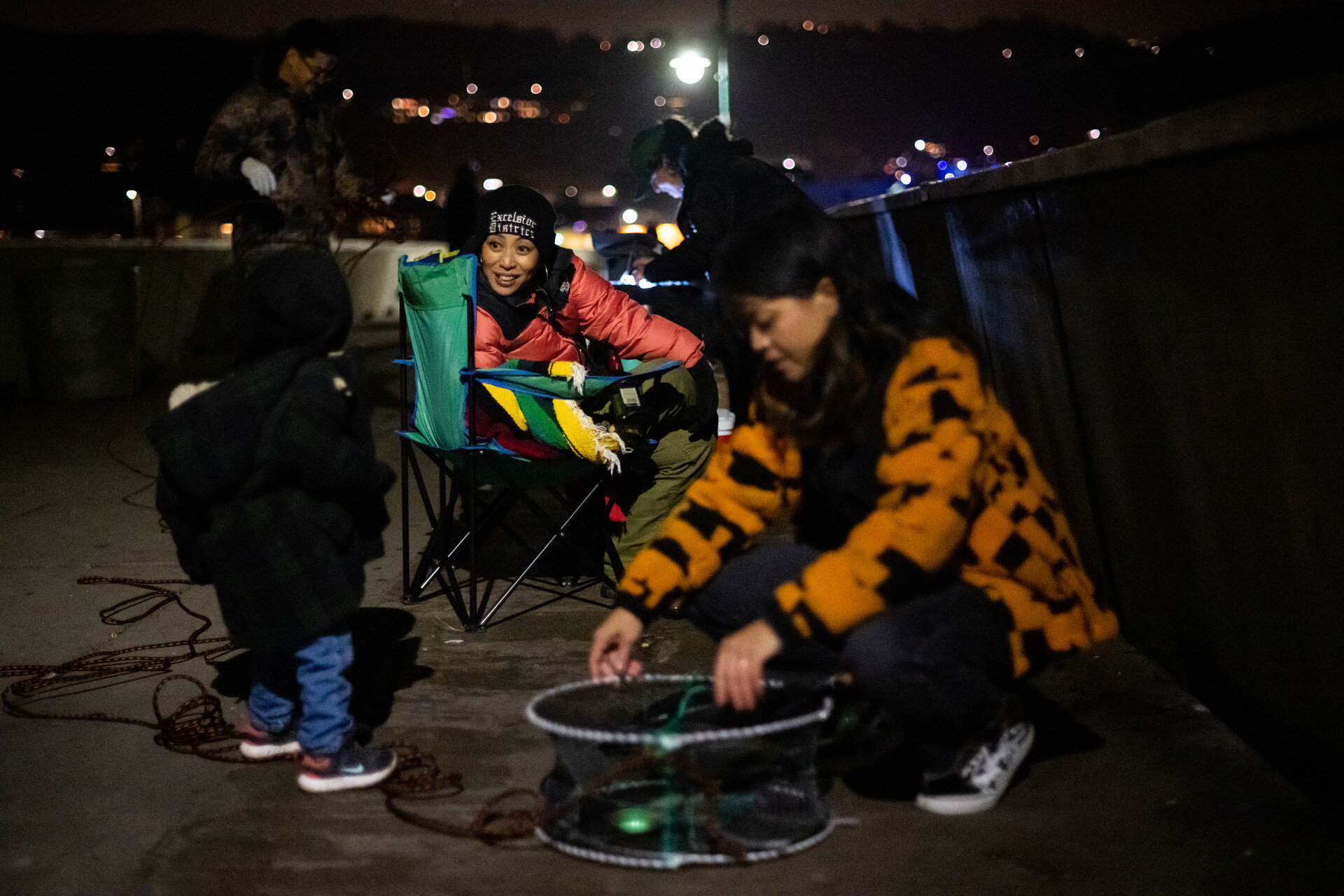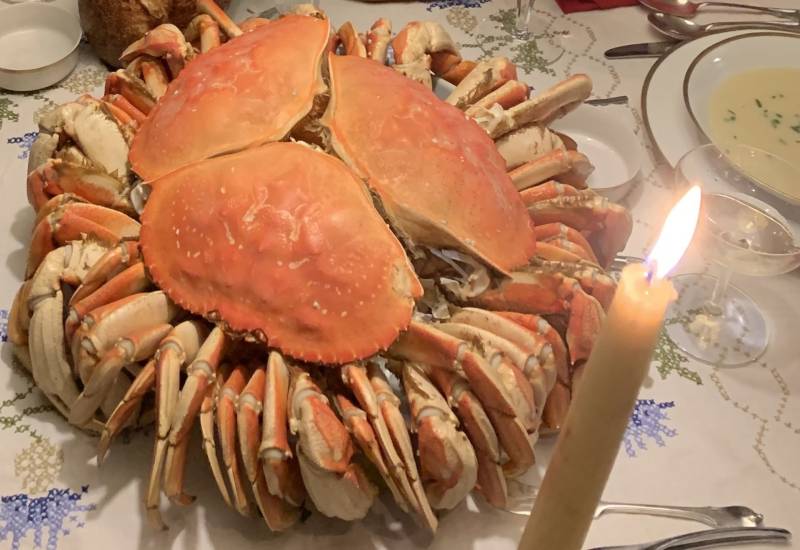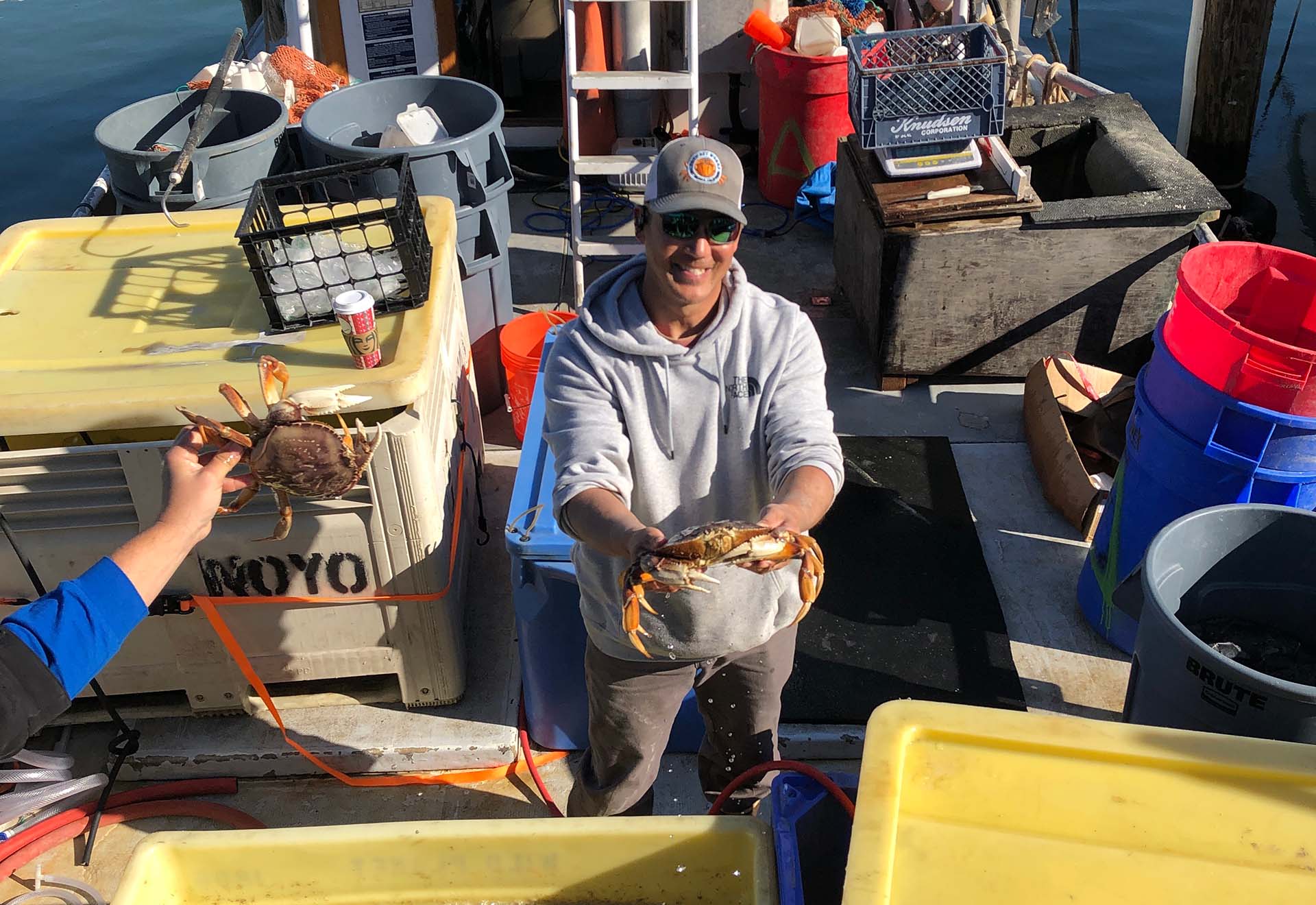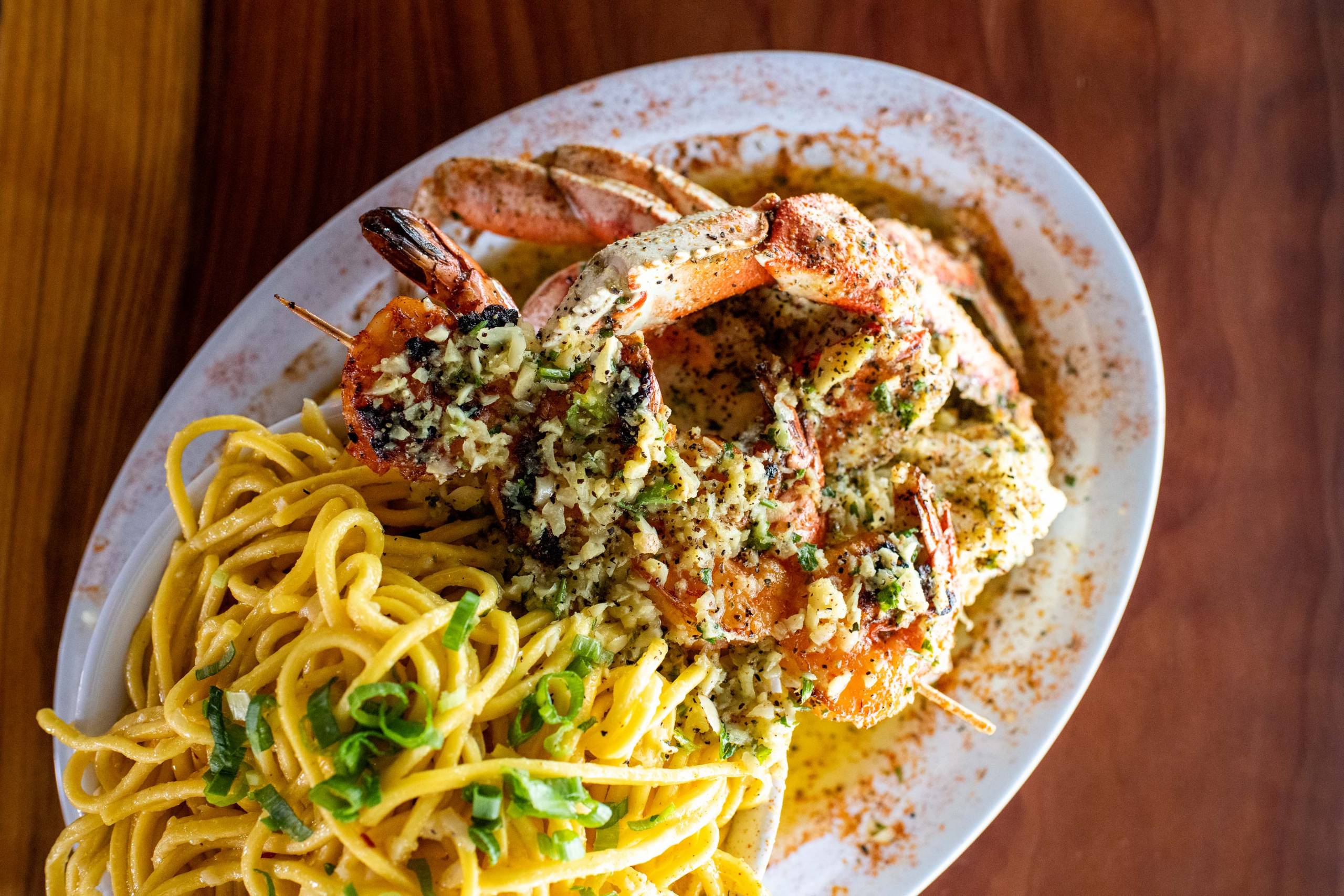After several delays, Dungeness crab season is finally upon us. That’s a big deal in the Bay Area: Whether the crabs are caught on a boat or off a pier, served in cioppino or over garlic noodles, a shared love for the ingredient has long brought together folks from all different cultural backgrounds.
“It always is just a ritual of togetherness, of hoping that you get more than what you got,” journalist, emcee, author and activist Rocky Rivera said of her own crab fishing experiences in a recent episode of All You Can Eat, KQED Forum’s biweekly exploration of Bay Area food cultures. “[You’re] having a good time and spending that time together with your family, with your friends, and of course, feasting afterward. That’s a memory that everybody associated with the Bay Area.”
Rivera wrote about how integral Dungeness crab was to her San Francisco childhood in a recent essay for KQED, describing late nights spent fishing and cooking with friends and family in the Filipino American community. The biggest response to the article, she said, is that people from all over shared their own personal stories about Dungeness crab — the kinds of stories that formed the basis of the Forum episode.

One caller, Maury from Berkeley, said that the show gave her a sense of nostalgia for her 90s childhood, when she would travel to San Francisco from Modesto to catch crabs. “I remember — whether it be with a bunch of homies or family — we would make an adventure out to Frisco, off of the Fort Mason Pier, and just throw a few nets and play dominoes or play cards and just picnic as we waited to catch crabs,” she said. “It is such a vibe to be able to go out there, put on our favorite Bay rap music as we were journeying out there from Modesto, and then coming back, excited about eating the crabs.”
Other callers described Cambodian-style stir fry dishes, steamed crab paired with latkes and even a seasonal crab burrito. Indeed, it seems like everyone in the Bay Area has a Dungeness crab story.




